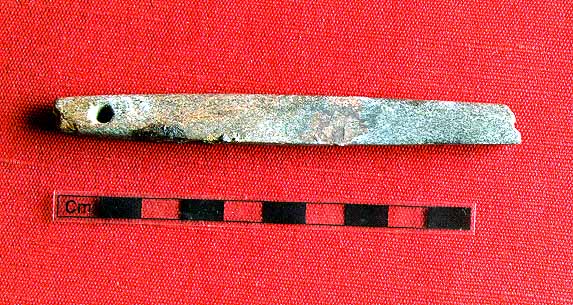|
|
Whetstone from Oxford: 12th century |

The source of the pale grey "schist" stone of which this little whetstone or hone-stone (a fine hard stone for sharpening knives or blades) is made is Eidsborg in Norway. We do not know whether the whetstones were produced in Norway and traded to England, or whether the schist stone itself was traded to England for manufacture here into whetstones, or whether the Norwegian stone was found in this country on the beach or glacially deposited; but in view of the popularity here of these whetstones in Norman times, we suspect they were a traded item.
In Norman times most edged tools and weapons were made of iron and required frequent sharpening, using hard, dense stone not local to Oxford. The small size and little perforation of this whetstone suggest it was a personal possession, worn on a thong around the neck, and used for sharpening a personal knife. This must have been quite a popular fashion for men in the 12th century in view of the large numbers found, and perhaps suggests that women had by this time ceased to wear personal knives themselves.
The whetstone was found in a timber house underlying Medieval houses in St Aldates.
© 1998 Oxfordshire Museum Service, Setúbal Museums and the Benaki Museum